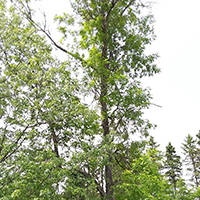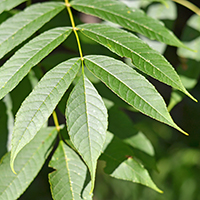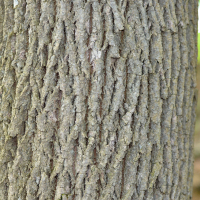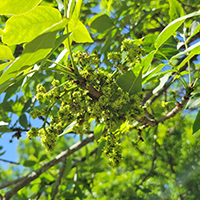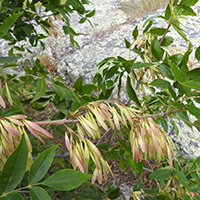What green/red ash looks like
Size and shape
- Reaches 25 metres high.
- Trunk up to 60 centimetres in diameter.
Leaves
- Green leaves (15 to 20 centimetres) with 5 to 9 toothed leaflets (10 to 15 centimetres).
- Young leaves are hairy underneath.
- Turn yellowish-brown in fall.
Bark
- Greyish brown.
- Tinged red on young trees.
- Has a lightly furrowed pattern.
Flowers
- Green-yellow loose clusters of flowers that bloom once leaves appear.
Fruit
- Winged keys (3 to 6 centimetres) hang in clusters.
Where green/red ash is found
Green/red ash trees are found throughout Southern and Central Ontario, extending north to Sault Ste. Marie, with some scattered locations northeast of Lake Superior. In Northwestern Ontario, it is found from Thunder Bay to Kenora.
What you need to know to grow green/red ash
- Moisture: grows best in moist soil.
- Soil: grows best in clay-loam or silt-loam soils.
- Shade: grows best in full sun to light shade.
- Caution:
- emerald ash borer is an invasive insect that feeds on and kills ash trees. Signs of infection include wilted or yellow foliage, “D” shaped exit holes on tree bark and sawdust or frass in tunnels. Control measures for emerald ash borer include insecticide injections and restricting the transport of infected ash supplies, such as firewood, into non-infested areas.
Benefits and uses of green/red ash
Wildlife benefits
Green/red ash seeds are a winter food source for many species, including:
- wild turkey
- cardinals
- squirrels
Deer browse twigs and leaves and rabbits eat the leaves of young trees. Green/red ash trees also provide cover and roost sites for many birds, such as the Cooper’s hawk and eastern screech owl. Green/red ash are host plants for numerous butterflies and moths.
Commercial uses
Green/red ash wood is strong, bendable and shock resistant, making it useful for baseball bats and tool handles. The bark is also used to produce red dye.
Fun facts about green/red ash
- Green ash and red ash used to be considered different species but are now combined into the same species. The trees are nearly identical, but the green ash has nearly hairless leaves and twigs, while the red ash has dense hairs on the leaves, stalks and twigs.
- Green/red ash live up to 100 years.
- Green/red ash can grow more than 60 centimetres per year.
Updated: November 22, 2023
Published: July 18, 2014
